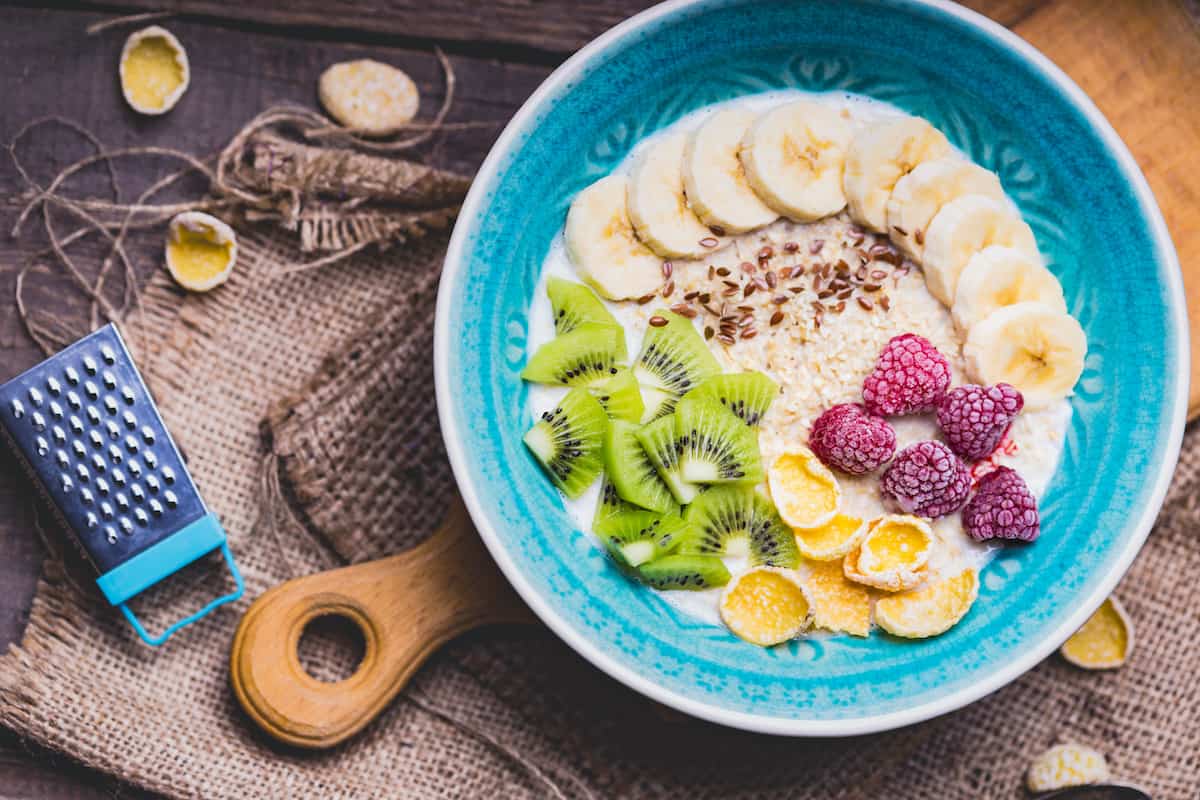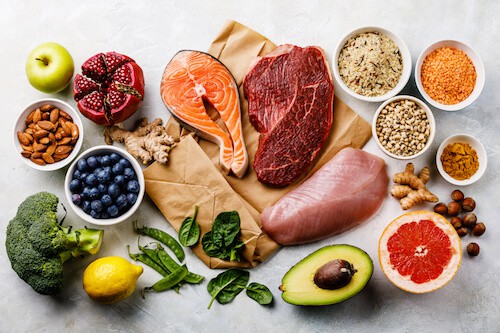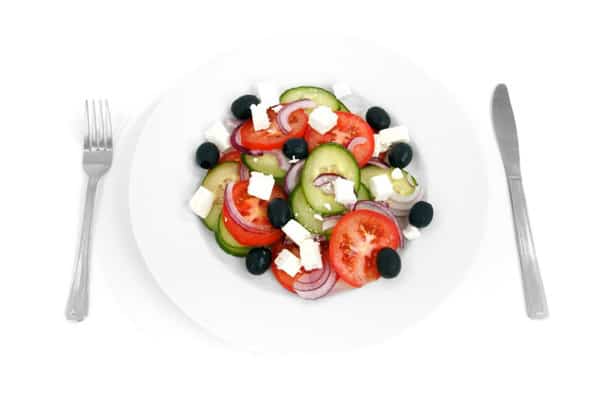7 Easy Tips for a Balanced, Healthy Diet

We all talk about healthy food and a healthy diet. But what does that actually mean and is there a perfect diet for everyone? Check out these 7 easy tips to get started!
A Healthy Diet Contains All Vital Nutrients

There is no one exact definition of a healthy diet. But your body needs vital nutrients so it can work at its best and defend itself against all kinds of diseases. With a healthy diet, you should feel fit and at ease.
But the perfect diet for all does not exist. In addition, humans are very adaptable with regard to diet. We can get nourishment from both vegetarian foods and meat-based products. In general, scientists recommend a wholesome diet, so that our bodies can absorb the nutrients efficiently.
Tips for A Healthy Diet
In general, the world’s population is eating less and less healthily. According to an analysis of global eating habits in Lancet Global Health, the number of people consuming fast food and sugary beverages is increasing.On the other hand, our knowledge of good nutrition continues to improve. For example, fats were once taboo, and a high cholesterol intake was considered a major problem. Now US health guidelines emphasize reducing carbohydrate consumption, table salt, and unhealthy fatty acids. A high cholesterol intake is no longer regarded as problematic.So how do we put this knowledge into practice into maintaining a healthy diet? Here are some tips:
1. Eat a Balanced Diet
Food can be delicious, and food diversity helps stimulate our tastebuds while also supplying us with more nutrients. Avoid an unbalanced diet of one type of food, and put different kinds of vegetables and grains on the table.
Be sure to expose your children to several types of food! It’s the only way for kids to learn to enjoy a variety of food. Since no food product contains a full range of nutrients, we need different foods for a healthy life.
2. Enjoy Moderate Amounts of High-Quality Meat
Vegetables and other plant-based products should be the main components of our diet, but it’s also great to supplement with animal products. Eat meat and fish once or twice a week, since animal protein offers many nutritional benefits.
Meat supplies the body with the trace element iron. However, too much can have a negative effect on heart health. If possible, meat should not come from genetically modified sources. It’s better to enjoy a piece of high-quality organic meat less frequently than a lot of unhealthy meat from factory farming. Fish, especially fatty fish such as mackerel, herring, and salmon, is particularly healthy due to its unsaturated fatty acids. Omega-3 fatty acids have anti-inflammatory and vascular protection effects. Fish also supplies high-quality protein.
3. Get Healthy Fats in Your Healthy Diet
The right fats are absolutely important to a healthy diet because they are carriers of the fat-soluble vitamins A, D, E, and K. You should select vegetable fats such as extra virgin olive oil, which contains polyunsaturated fatty acids.

We usually don’t consume enough oils containing omega-3 fatty acids, which can be found in fatty fish and nuts. While scientists used to recommend a low-fat diet, they have now loosened their recommendations. New research from large studies, like the PURE study and the PREDIMED study, has highlighted the importance of healthy fat in our diets.
These show that a diet that is rich in fat and low in carbohydrates, like the Mediterranean diet, can lower risks for certain illnesses such as cancer, heart attack, and stroke. We don’t have to limit our healthy fat intake, but we should cut back on trans fats and saturated fat. Baked and fried foods are chief culprits for those, so it’s best to eat those as a treat, or for special occasions.
4. Choose Complex Carbohydrates Over Simple Sugars
Eat complex carbohydrates, like whole-wheat products, instead of their simple counterparts like white bread, pasta, and rice. They fill you up for a long time and, unlike white flour products, still have a whole range of nutrients. Mix things up with other whole grains like quinoa, amaranth, buckwheat, and millet. Especially when it comes to gluten-free nutrition, they offer a high nutrient density, variety, and diversity. Restrict simple carbohydrates, such as those found in sugary foods, for the sake of your health. Eat doughnuts, or drink sodas as a rare treat, if at all.
5. Eat Five Servings of Fruit and Vegetables
You should eat 5 servings of vegetables and fruit a day: three portions of vegetables, and two portions of fruit. You can also substitute the fruit with vegetables.
What’s a serving size? It’s roughly the amount you can hold in the palm of your hand. Vegetables and fruit provide plenty of vitamins, minerals, trace elements, secondary plant substances, dietary fibers, and many other ingredients that keep us healthy. Try eating vegetables with every meal – whether they’re raw, cooked, or as a side salad.
Kid Feeding Tip: Smoothies are delicious, and a great way to mask veggies your little ones might not be too happy about eating otherwise.
6. Drink at Least Eight Glasses of Water Each Day
Make sure you drink enough! Nutritional scientists recommend drinking at least 1.5 liters of unsweetened beverages,such as water or tea per day. Water plays an important role in our body. It serves as a solvent and means of transport. In particular, the excretory function of the kidneys can be supported by an adequate amount of water.
7. Choose Unprocessed Food When You Can

As a general rule, the closer your food is to nature, the healthier it is. Unprocessed food can’t have the hidden artificial ingredients and trans fat you might find in packaged foods.
If you’re keen on certain snacks and fast food, why not prepare them yourself? That way you know exactly what it contains. Extra bonus: they usually taste much better, and your children will love helping you prepare snacks, finger food,and healthy food!
What’s the best way to preserve nutrients in cooking? Prepare food at as low a temperature as possible, and in very little water. Steaming and stewing cooking methods can be really beneficial.
Next time you shop, be on the lookout for healthy, unprocessed treats.
Challenges to a Healthy Diet

In some ways, eating healthy is easier than ever these days, since there is a wide range of food in supermarkets. But at the same time, that’s exactly what makes it so difficult.
We can buy everything at any time. The shelves are full of pre-packaged food and ready-to-eat products. These contain a number of additives and flavor enhancers, but often not very beneficial ingredients. A large amount of salt and sugar in the products negatively train tastes right from the cradle. According to the American Heart Association, Americans consume 3,400 mg of sodium daily. Cardiologists consider the high salt consumption to be an important factor in the rise of high blood pressure.
In addition, fresh foods often seem to cost more than unhealthy varieties. Meat and sausages can be kept on the shelves almost indefinitely. They are among the cheaper foods and often appear on plates several times a day.
Stay Healthy!
But, stay the course! Just knowing these tips and applying them when you’re shopping can be a huge help. Don’t get discouraged if you break down and buy processed food loaded with trans fat from time to time. Just don’t make that a daily habit. In time, your good, healthy choices will pay off!
What can you do to make your family’s diet healthier? Collect ideas and discuss them with your loved ones on FamilyApp!





